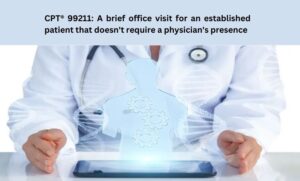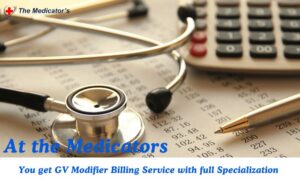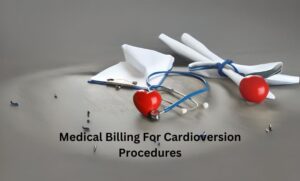In the dynamic healthcare landscape, where technology and patient care converge, effective communication in billing processes has never been more critical. Billing is an intricate aspect of the healthcare system, involving complex procedures, regulations, and many stakeholders. As healthcare providers strive for efficiency, accuracy, and patient satisfaction, the nexus between patient communication and billing emerges as a key factor in achieving these goals.
Understanding the Landscape:
Healthcare billing is a multifaceted process encompassing various stages, from pre-service estimates to insurance verification, claims submission, and patient invoicing. Patient communication plays a pivotal role in this intricate web at every step. Clear and transparent communication is essential to ensure that patients comprehend the financial aspects of their care, leading to better compliance and satisfaction.
Pre-Service Patient Communication:
The patient journey begins with pre-service communication, where healthcare providers can set clear expectations regarding costs and billing procedures. Transparent communication about insurance coverage, potential out-of-pocket expenses, and available payment options can empower patients to make informed decisions about their healthcare. This proactive approach establishes trust and helps prevent misunderstandings that may arise later in the billing cycle.
Insurance Verification and Authorization:
Effective communication is particularly crucial during the insurance verification and authorization process. At this stage, miscommunication or lack of information can lead to claim denials, delayed payments, and increased administrative burden. Clear communication with patients regarding the importance of providing accurate insurance details, obtaining pre-authorizations, and understanding coverage limitations can significantly streamline the billing process.
Billing Transparency:
One of the primary challenges in healthcare billing is the lack of transparency. Patients often receive confusing bills with codes and terminology they may not understand. Improved patient conveying can address this issue by breaking complex billing information into comprehensible language. Detailed explanations of charges, services rendered, and insurance adjustments can empower patients to navigate their bills confidently.
Empowering Patients through Education:
Health literacy plays a pivotal role in effective patient conveying. Educating patients about common billing terms, the concept of co-pays and deductibles, and the importance of timely payments can contribute to a smoother billing process. Healthcare providers can leverage various communication channels, including patient portals, informational pamphlets, and in-person discussions, to enhance patient understanding of the financial aspects of their care.
Enhanced Patient Experience:
A positive patient experience is directly linked to effective communication. When patients feel informed and supported throughout the billing process, their overall satisfaction with the healthcare provider increases. A positive experience contributes to patient loyalty and is a powerful marketing tool through word-of-mouth recommendations.
The Role of Technology:
Technology plays a pivotal role in healthcare communication and billing in the modern era. Patient portals, electronic health records (EHRs), and mobile applications offer platforms for seamless and secure communication between healthcare providers and patients. These tools enable patients to access their billing information, receive updates on claims status, and communicate with billing departments, fostering transparency and efficiency.
Automated Communication Systems:
Automated communication systems, such as text message reminders for upcoming appointments and alerts for outstanding balances, can significantly enhance patient engagement in the billing process. These systems serve as a convenient means of communication and reduce the likelihood of missed payments and billing-related misunderstandings.
Personalized Patient Communication:
Personalization in communication is a key factor in engaging patients and promoting billing understanding. Tailoring messages to individual patient preferences, such as preferred communication channels and language preferences, can enhance the effectiveness of communication efforts. Personalized communication fosters a sense of individualized care, contributing to a positive patient experience.
Addressing Patient Concerns and Questions:
Effective communication involves being responsive to patient concerns and questions. Establishing channels for patients to seek clarification on billing matters, dispute charges, or request additional information is crucial. A responsive approach resolves issues promptly and demonstrates a commitment to patient-centric care.
Compliance and Regulatory Considerations:
The healthcare billing landscape is subject to numerous regulations and compliance requirements. Clear communication with patients regarding the legal aspects of billing, including privacy regulations and billing code standards, can mitigate the risk of legal issues and enhance overall compliance. Keeping patients informed about their rights and responsibilities in the billing process contributes to a transparent and ethical healthcare environment.
Challenges and Solutions:
Despite the importance of patient conveying in billing, healthcare providers face several challenges in implementing effective communication strategies. Limited resources, time constraints, and the complexity of healthcare systems can hinder communication efforts. However, adopting innovative solutions and best practices can help overcome these challenges.
Training Healthcare Staff:
Ensuring that healthcare staff, including billing and administrative personnel, are well-trained in effective communication strategies is paramount. Training programs should cover technical aspects of billing processes and interpersonal communication skills. Staff who communicate clearly and empathetically contribute to a positive patient experience.
Integration of Communication Platforms:
Integration of communication platforms with existing healthcare systems, such as EHRs and billing software, can streamline communication processes. This integration enables real-time access to patient information, allowing healthcare providers to deliver personalized and accurate communication. Additionally, it reduces the likelihood of information silos that can lead to communication breakdowns.
Collaboration with Payers:
Effective patient communication in billing requires collaboration not only with healthcare providers but also with insurance payers. Establishing channels for communication between healthcare providers and payers can facilitate the resolution of billing issues, reduce claim denials, and enhance overall efficiency in the revenue cycle.
Patient Feedback Mechanisms:
Implementing patient feedback mechanisms, such as surveys and feedback forms, provides valuable insights into the effectiveness of communication strategies. Understanding patient perspectives on billing communication helps healthcare providers identify areas for improvement and tailor their communication approaches to meet patient needs.
Also Read:
- Effective Patient Retention Strategies
- Best Practices for Patient Safety
- A Comprehensive Guide to Patient Engagement
Conclusion:
The symbiotic relationship between patient communication and billing efficiency in healthcare is undeniable. Clear and transparent communication is a patient-centric approach and a strategic imperative for healthcare providers seeking operational excellence. By embracing innovative communication technologies, investing in staff training, and fostering collaboration with payers, healthcare providers can navigate billing complexities while enhancing the overall patient experience. Effective patient conveying will remain a cornerstone in achieving financial sustainability and delivering quality care as the healthcare landscape evolves.









